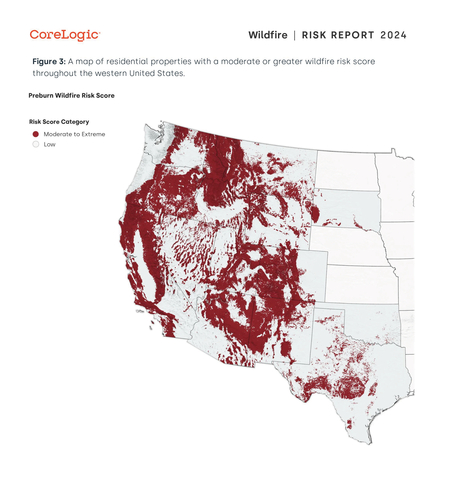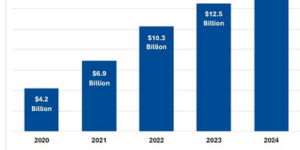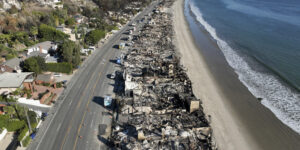Changing weather patterns and extreme weather are factors leading to more frequent wildfires. New analysis indicates more than 2.6 million homes across 14 states are at moderate to very high risk of wildfire damage during the 2024 wildfire season, with a total reconstruction cost of $1.3 trillion, according to the 2024 CoreLogic Wildfire Risk Report.
The report also highlights the importance of mitigation techniques, both on an individual property and community wide basis—which have benefits for both homeowners and insurers. In fact, an additional study shows mitigation tactics can lead to a .75 percent reduction of expected loss per property.

The western United States has the greatest wildfire risk with three states comprising 70 percent of the risk, according to the report.
The states with the highest number of homes at moderate or greater risk of wildfire exposure:
California: 1,258,748 homes at risk
Colorado: 321,294 homes at risk
Texas: 244,617 homes at risk
Oregon: 129,567 homes at risk
Arizona: 124,603 homes at risk
These states face an elevated level of risk, in particular, because of the high number of homes in undeveloped areas or due to increased exposure to the wildland-urban interface, where homes are near wildlife such as trees, vegetation and other flammable materials.
The Los Angeles metropolitan area leads the nation with the highest number of homes at risk. Here, more than 245,000 homes have a moderate or greater risk of wildfire, representing a total reconstruction value of $186.6 billion. Not all homes that experience a loss in a wildfire scenario will be a total loss, the report noted.
“In recent years, we’ve seen wildfires occur in unexpected places, reinforcing the need to understand the risk landscape and take mitigation action. Both insurers and consumers have a role to play to ensure adequate protection,” said Jon Schneyer, CoreLogic’s director of catastrophe response. “These numbers may seem overwhelming, but research shows that mitigation efforts make a real difference in potential losses from wildfires. The good news is there are actions people can take to lessen the risk.”
Effective mitigation strategies
Multiple devastating wildfires in recent years highlight the need for individuals and communities to take mitigation action.
In 2018, the Camp Fire decimated more than 90 percent of the town of Paradise, Calif.
A recent collaborative study with the Town of Paradise, Milliman, Inc, and CoreLogic found combining individual home- and community-level mitigation strategies led to a 75 percent reduction in expected loss per property in high-risk areas like Paradise.
Mitigation strategies can also lead to lower insurance premiums.
Effective mitigation is a combined effort between communities and individuals. Some mitigation tactics for individuals include:
- Create a five-foot buffer around the home by removing vegetation, trees, overhanging branches, grass/turf, wood fencing, etc. within five feet of the home.
- Do not store anything—including vehicles—within the five-foot buffer zone.
- Prepare the home with a Class A-fire rated roof, metal gutters and ember resistant vents.
- Maintain the deck and yard within 30 feet of the home by routinely clearing tree debris, replacing combustible furniture and moving firewood and propane tanks.
The report outlined community-level mitigation efforts including:
- Leveraging wildfire informed development patterns—the strategic planning of development patterns informed by wildfire risk.
- Selectively decreasing the number of structures within town boundaries, focusing on rebuilding in areas with lower wildfire risk and being intentional with land use planning.
- Implementation of external buffers—well-maintained areas with low fire spread potential on the border of the town.
Additional mitigation tactics can be found through Insurance Institute for Business & Home Safety’s (IBHS) Wildfire Prepared Home Program at wildfireprepared.org.





















 Insurers Need End-to-End Strategy to See Double the ROI in AI Implementation
Insurers Need End-to-End Strategy to See Double the ROI in AI Implementation  Severe Midwest Storms Result in Baseball Size Hail
Severe Midwest Storms Result in Baseball Size Hail  Bill Aims to Make Staged Accidents a Federal Crime
Bill Aims to Make Staged Accidents a Federal Crime  Revisiting California’s Wildfires: A Personal Journey
Revisiting California’s Wildfires: A Personal Journey 




